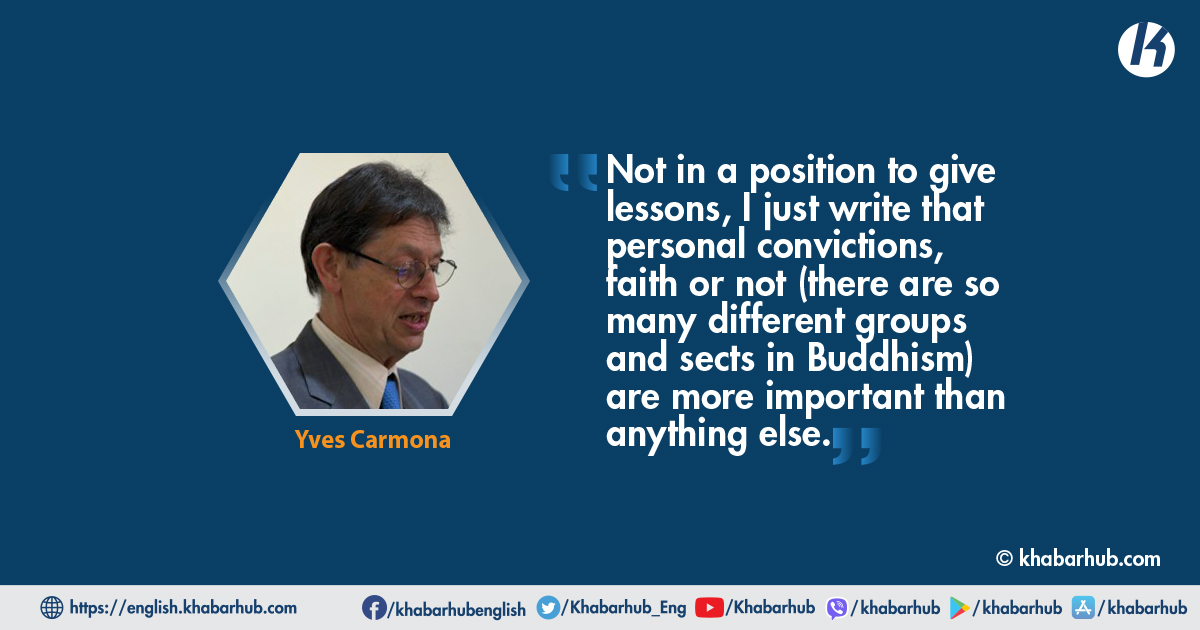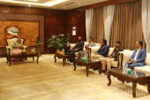I had an exceptional chance to write about a country where I went very often, two countries where I actually lived, and one country where I couldn’t live because of a next-door country’s invasion but whose civilization is very familiar.
And they are intimately united by one red wire: Buddhism.
My inspiration comes from a part from a book written in French, “Le Monastère de l’aube” which I would translate as “The Monastery of Dawn” by Corinne Atlan (published by Albin Michel).
She is one of the best translators from Japanese to French and this is her first and one of the most famous novels.
The book tells the story of a child, Nobuo, who lost his mother and is raised by his elder sister, Mayumi.
In the temple of Kiyomizu, one of the most important in Kyoto, he becomes a monk.
In 1853, he leaves Kyôto to take the dress in Mount Kôya, a famous Shingon monastery forbidden to women where his name becomes Mitsudô, “the secret way”.
But his inner torments lead him to leave the mountain, then Japan where a civil war between the Emperor’s followers and the shôgun’s supporters fight each other.
If not, how could tens of ethnics sometimes speaking different languages live in a united country and wanting it? I personally watched the previous elections, there was an atmosphere of the festival, voters had put on their best clothes because voting so many years after a civil war had a meaning and I still pay respect to that.
After many adventures and working in an intense inner quest, he goes to India in the footsteps of Buddha and then in Nepal, meets there a mysterious Tibetan and a sacred lady dancer who overwhelms his life by initiating him to symbolism and tantric sex. Twelve years later, clear-sighted and serene, he comes back to a deeply transformed Japan.
So in between, his road and inner path go through Nepal where similarities with Japan but also other countries strike him: Katmandou looks like Kyoto, Rana behave like shôguns, powder used as offerings is similar to Japanse “gohei”, the common language is Buddhist prayers like “om pani Padme hum”, (Om, the jewel in the lotus), Nepalese homa rite is the same as Japanese “Goma”, he meets a Shakya (one of my friends) and hears of the unification of Nepal by Prithvi, another friend.
Swayanbhunath makes him think of mount Koya and hermits are similar in both countries, Guru Rimpoche leads to Kûkai and so on.
Nepal looks like Japan also for smell: people living near the river do the dirty jobs of taking care of killing and preserving animals and tend to become prostitutes, boatmen and tramps.
From other countries as well, his friend in this journey is Tenzing, a Tibetan, and the hero Nobuo takes the name “Norbu” not to be seen as a foreigner.
He then meets a woman, half Newar and half Tibetan, whose Sri Lankan way of dancing looks like the one in Japan, he dreams of her like the Sanskrit Avalokitesvara, the Tibetan Chenrezig, or the Japanese Kannon, actually, they are the same.
He dates her in Swayanbhu and I won’t tell more: some readers would like the French text and I will not spoil it by revealing the end.
It will be enough to write Buddhism has been and still is the link which connects all these worlds together.
India was the country where Lord Buddha died and made known his findings through his followers, then Buddhism went away – a centuries-long journey to Sri Lanka, Tibet, a strong minority in Nepal but not necessarily a big one when you look at numbers. Nepal where waves follow each other, the first sherpa autonomous state was attained in the 15th century, not always agreeing with the post-1959 refugees, de facto independence based on the strong power of the lamas before Peking invaded Tibet.
Nepal « where the Buddha was born” touristic pamphlets proudly proclaim, which is true – I saw the bodhi tree where he is believed to have been delivered – except there was no Nepal in that time…
What do these historical and political twists and turns tell us? Buddhist’s faith is stronger than politics!
His journey leading him to Nepal, his last stop, tells what you know: there is no confrontation between believers of different faiths.
There were wars in the past, there were recently fatalities because of power and politics but not because of religions.
I also saw in Lumbini a religious quarter created in the XXth century where the majority of the population is not Buddhist but Muslim and my main interest was for archeology where the best Nepalese specialist dared to criticize officials for being more interested in the site making money.
If not, how could tens of ethnics sometimes speaking different languages live in a united country and wanting it? I personally watched the previous elections, there was an atmosphere of the festival, voters had put on their best clothes because voting so many years after a civil war had a meaning and I still pay respect to that.
I saw a lot of people devoted not to the dalaï-lama himself, the Chinese power wouldn’t allow it and he has long ago given up all kinds of secular power.
But I also saw in a hotel room in Katmandu the Rimpoche’s words translated in mandarin for Chinese, mostly women, who wouldn’t have come without the tacit agreement of Peking.
I also saw in Lumbini a religious quarter created in the XXth century where the majority of the population is not Buddhist but Muslim and my main interest was for archeology where the best Nepalese specialist dared to criticize officials for being more interested in the site making money.
Not in a position to give lessons, I just write that personal convictions, faith or not (there are so many different groups and sects in Buddhism) are more important than anything else.
(Yves Carmona is former French Ambassador to Nepal)









Comment